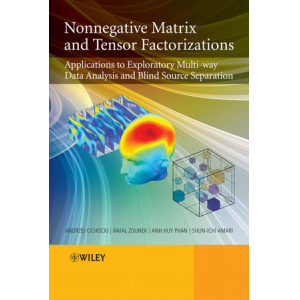my top twenty inventions and more
Top twenty my projects and more.
Jay Jordan
1. .Smart watch with heater function.
- • Smartwatches are becoming increasingly popular, offering a wide range of functions and benefits. • Smart watches allow you to stay connected, receive notifications, messages and calls right on your wrist. • Smartwatches offer health monitoring features that can help you lead a healthier lifestyle. • Some smartwatches offer reminders to move and stand, helping to lead an active lifestyle throughout the day. • Smart watches can be an effective personal assistant thanks to voice recognition technology and built-in virtual assistants. • The smartwatch is suitable for fitness, offering GPS tracking, exercise recognition and workout summary functions. • Smart watches have a wide range of designs, styles and strap options, allowing you to find a suitable option for personal taste and fashion. • Smart watches are equipped with long-lasting batteries that can work for several days or even weeks
- which can usually last for several days or even weeks, depending on the usage. This ensures that your smartwatch is always ready to go, eliminating the need for frequent charging. In addition, many smartwatches are equipped with a fast charging function, which allows you to quickly recharge the battery if necessary. Integration with a smart home If you have a smart home system, a smartwatch can serve as a convenient control center. Many smartwatches are compatible with popular smart home systems, allowing you to control lighting, thermostat, security cameras and more from your wrist. This level of convenience and integration can greatly simplify your daily activities and increase the efficiency of home automation in general. In conclusion, being a fan of smartwatches has many advantages. Smartwatches bring convenience, functionality and style to your daily life - from constant connectivity on the go to effective health monitoring.
2. laptop with function 3d printer.
1. Laptop case: It has a compact and lightweight design to ensure easy carrying. The case contains an integrated display, keyboard and touchpad for controlling the device. 2. Display: The high resolution display allows you to display the details of the models of books that will be printed. 3. Keyboard and touchpad: The keyboard allows the user to enter commands and settings for 3D printing, as well as to control software applications. The touchpad provides the user with additional input and control options. 4. Control buttons: For the convenience of using a laptop with a 3D printer function, buttons can be placed on the laptop case, allowing you to quickly perform basic functions such as selecting a model, configuring printing parameters and starting printing. 5. 3D Printer Module: There is a 3D printer module inside the laptop, which is responsible for the physical printing of the book model. The module contains an extruder, a printing platform, a material supply system and other components necessary for the operation of a 3D printer. 6. Connection ports: The laptop must have multiple connection ports to allow the user to import book models from external devices or store them on USB drives. This can be a USB port, an SD card slot, or a network port. 7. Battery and charger: A portable laptop with a 3D printer function must be equipped with a lithium-ion battery to ensure continuity of operation even in the absence of an electrical network. The charger allows the user to charge the laptop. 8. Software: The built-in software allows users to design and customize models of books before printing. It is also responsible for managing the printing process, setting parameters, and monitoring print progress. This scheme allows users to have a portable device that combines the functions of a laptop and a 3D printer to create samples and models of books.
3. smart watch with 3d printer function.
- 1. Display: They have a color touchscreen display that allows users to view information such as time, notifications and other data. 2. Sensors: The smartwatch is equipped with various sensors such as accelerometer, gyroscope, heart rate monitor, light sensors, etc. They collect various data about the user's physical activity and health. 3. Wireless connection: The smartwatch can connect to a smartphone or other devices via Bluetooth, Wi-Fi or NFC to transmit and receive data. 4. GPS: The smartwatch can be equipped with a GPS module that allows you to determine the user's location. 5. Built-in 3D printer: The main feature of such smartwatches is the presence of an integrated 3D printer. This allows users to create physical objects, adjust their parameters and print them directly from the device on their wrist. 6. Management: Smartwatches usually have a paired mobile application or interface to manage the settings, data and functions of the device. 7. Battery: Like any device, a smartwatch with a 3D printer function is equipped with a lithium-ion battery that ensures their operation. The battery can be chargeable and have a duration of operation for several days.
A portable video game console with hologram function.
- A portable video game console with a hologram function is a device that allows the user to enjoy the gameplay using holographic technology. The scheme of such a prefix may include the following components: 1. Main Module: This is the core of the device that provides the main functionality. It contains the processor, memory, graphics processor and operating system. 2. Display: The main screen of the set-top box, which displays game graphics and holograms. The display can be touch-sensitive to control gameplay. 3. Hologram projector: a special device that projects holograms onto an airy or transparent surface. The projector can be integrated into the set-top box itself or be a separate module. 4. Cameras: Devices that recognize user movements and gestures to control holograms and gameplay. Cameras can be placed around the screen or on other parts of the set-top box. 5. Communication modules: The set-top box can be equipped with Wi-Fi, Bluetooth and other modules for connecting to the Internet, data synchronization or playing in multiplayer mode. 6. Controls: To control the gameplay, the console can have various controls such as joysticks, buttons, touch panels or even voice control. 7. Battery: To ensure mobility, the set-top box is usually equipped with a built-in battery that allows you to play without connecting to a power source.
- 1. Central Processing Unit (CPU): A high-performance mobile processor such as Intel Core i7 or AMD Ryzen 7 to provide enough power to run modern games and other computing tasks. 2. Graphics Processor (GPU): Powerful discrete graphics card such as Nvidia GeForce RTX or AMD Radeon RX series for graphics processing and smooth gaming graphics. 3. Random access memory (RAM): Usually 16 GB or more to provide enough memory for multitasking and running resource-demanding games. 4. Internal memory: SSD drive with enough space to store the operating system, applications and games. The volume can range from 256 GB to several terabytes. 5. Display: High-quality screen with Full HD or 4K resolution, providing bright and clear images. The screen size can range from 15 to 17 inches.
- 6. Battery: Large battery capacity to ensure long battery life. The power can range from 60 to 100 watts per hour or more. 7. Smartwatch: Built-in smartwatch module with wristwatch display to display time, notifications, fitness data and other functions. This module can be integrated with the laptop's operating system and used to control some functions of the game or applications. 8. Keyboard and touchpad: Ergonomic and illuminated keyboard for comfortable typing and playing. The laptop will also have an integrated touchpad for easy cursor control. 9. Ports and connectors: Various ports for connecting external devices such as USB, HDMI, audio outputs, Ethernet, etc., to extend the functionality of the laptop. 10. Cooling: Cooling system with fans and heat pipes to maintain a low operating temperature of the components under intense load.
5. .portable laptop with hologram function.
1. The central processing unit (CPU) is the main computing device responsible for data processing and management of all components of a laptop computer. 2. Random access memory (RAM) is used for temporary storage of data that is actively used by the computer at the moment. 3. Permanent data storage (for example, a hard disk or solid-state drive) - serves for long-term storage of the operating system, programs and user files. 4. Power supply unit - provides power to all components of a laptop computer. 5. Display - displays information to the user, can be touch-sensitive and have the ability to control gestures.
6. Touch screen - Allows you to interact with a laptop computer using touch and gestures, such as resizing or rotating the screen. 7. Keyboard or virtual keyboard - provides the ability to enter text and commands. 8. Wireless communication modules (for example, Wi-Fi, Bluetooth) - allow you to connect to wireless networks, devices and transfer data. 9. Sensors - can include an accelerometer to determine the position of the device in space, a pulse sensor to measure heart rate, and others. 10. Smartwatch - Built into the case of a laptop computer, provides smartwatch functions such as time display, notifications of incoming messages and calls, monitoring of physical activity, etc. 11. Operating system – software that controls the operation of all components of a laptop computer and provides a user interface for interacting with the device.
My engines.
The scheme of the laser-ion plasma engine includes the following main components:
1. Ion engine: There is an ion generator inside the engine, which is responsible for the gas ionization process and the creation of an ion flow. The gas is supplied through a special entrance to the engine.
2. Laser system: Lasers are used to ionize gas atoms. They generate high-energy beams that are directed at a target inside the engine.
3. Accelerator electrodes: The electrodes are placed inside the motor and create an electric field that accelerates the ions, creating thrust. The accelerator electrodes maintain a potential difference between each other, which ensures the acceleration of ions.
4. Control system: The control system is responsible for controlling all processes in the engine, including lasers, electrodes and other components. It can also adjust the laser energy and the strength of the electric field.
5. Focusing optics: Optical elements are used to focus the laser beam on a target inside the engine.
6. Outlet nozzle: After passing through the ion generator, the ions leave the system through the outlet nozzle. The nozzle generates the ion flow in such a way as to ensure maximum efficiency and a set of speeds.
The scheme of the laser-ion plasma engine makes it possible to use the effects of ionization and photoelectric action to accelerate ions and generate thrust. This type of engine has high efficiency and can provide a long time
A laser-ion engine is a type of electric rocket engine that uses the physical phenomena of the interaction of laser radiation with ionized atoms or molecules to create thrust.
The basic scheme of the laser-ion engine includes:
1. Power supply - provides electrical energy to power the system.
2. Reservoir with working substance - stores the working substance, which will be ionized by laser radiation.
3. Laser - generates a powerful laser beam that is directed at the working substance.
4. Ionizer is a place where ionization of atoms or molecules of a working substance occurs under the influence of laser radiation.
5. Electrostatic system - controls and accelerates ions, creating a flow of calves.
6. Discharge pipe - directs the ejected ions in a certain direction, creating thrust.
The operation process of the laser-ion engine is as follows:
- The laser generates a powerful laser beam with special parameters (time, power, wavelength, etc.).
2. The laser beam is directed at the working substance located in the ionizer.
- 3. Under the influence of laser radiation, atoms or molecules of the working substance are ionized - that is, they lose or gain electrons, becoming charged.
- 4. Ions accumulate and accelerate in the electrostatic system, creating a flow of calves.
- 5. The flow of calves is directed into the discharge pipe, creating traction.
- Thus, the laser-ion engine uses laser radiation to ionize the working substance, and then accelerates the ions, creating a flow of calves and creating thrust. This type of engine usually has a high specific thrust and efficiency, which makes it attractive for use in space missions.works.
2. The laser beam is directed at the working substance in the ionizer.
3. Under the influence of laser radiation, atoms or molecules of the working substance are ionized - that is, they lose or acquire electrons, becoming charged.
4. Ions accumulate and accelerate in the electrostatic system, creating a flow of calves.
5. The flow of calves is directed into the exhaust pipe, creating traction.
Thus, the laser-ion engine uses laser radiation to ionize the working substance, and then accelerates the ions, creating a flow of electrons and creating thrust. This type of engine usually has a high specific thrust and efficiency, which makes it attractive for use in space missions.works.
Plasma Detonation Engine (PDE) is a new development in the field of rocket engines. It uses plasma explosions to generate thrust.
The plasma subsidy engine circuit includes the following main components:
1. Combustion chamber: the main element of the engine in which plasma generation and its subsidization takes place. The combustion chamber has numerous openings through which the plasma exits and creates thrust.
2. Fuel supply: Fuel is supplied to the combustion chamber from a tank located on the rocket. It is important that the fuel supply is accurate and stable to ensure reliable engine operation.
3. Fuel regulator: a device that controls the supply of fuel to the combustion chamber. It allows you to regulate and maintain optimal conditions for fuel combustion and plasma generation. Gorenje
4. Electrodes: metal conductors that are installed in the combustion chamber and are responsible for initiating and controlling plasma explosions. The electrodes create electrical discharges that ignite a mixture of fuel and air, forming a plasma.
5. Reactor: a device that is designed to provide plasma. The reactor directs the plasma column in the right direction and amplifies the plasma energy, which ensures more efficient thrust generation.
6. Cooling system: The plasma subsidized engine generates a significant amount of heat, so a cooling system is needed to prevent overheating and damage to engine components. This may include a coolant circulation system or the use of heat exchangers.
These are the main components of the plasma subsidy engine circuit. The specific details and design may vary depending on the specific design and application of the engine.
The laser ion plasma subsidy engine consists of the following main components:
1. Laser generator: Generates intense laser pulses.
2. Optical system: directs laser radiation at the target.
3. Purpose: usually it is a fuel pellet or a thin layer of fuel material.
4. Laser ablation: Laser pulses cause ablation of the target in the form of the release of highly heated plasma particles.
5. Electrostatic accelerator: used to accelerate ions formed in plasma to high speeds.
6. Magnetic nasal system: directs the ion beam in the right direction, creating thrust.
7. Orbit Tracker: Monitors the movement of ions and maintains them in a predetermined orbit.
8. Control system: regulates the laser power, pulse frequency and other parameters of the engine operation.
The laser ion-plasma subsidy engine operates according to the following scheme:
1. The laser generator generates intense laser pulses.
2. The optical system directs laser pulses at a target (a fuel pellet or a thin layer of fuel material).
3. Laser ablation. Laser pulses cause ablation of the target, that is, the removal of a thin layer of material from the surface.
4. Ablation generates highly heated plasma (plasma particles), which escapes from the target.
5. Plasma particles undergo an ionization process, forming positively charged ions.
6. The resulting ions pass through an electrostatic accelerator, which increases their velocity.
7. Ions enter the magnetic nasal system, where they are directed in the right direction, creating thrust.
8. The control system adjusts the operating parameters of the engine to ensure the required thrust and efficiency.
1. The laser generator generates intense laser pulses.
2. The optical system directs laser pulses at a target (a fuel tablet or a thin layer of fuel material).
3. Laser ablation. Laser pulses cause ablation of the target, that is, the removal of a thin layer of material from the surface.
4. During ablation, highly heated plasma (plasma particles) is formed, which exits the target.
5. Plasma particles undergo an ionization process, forming positively charged ions.
6. The ions formed pass through an electrostatic accelerator, which increases their speed.
7. The ions enter the magnetic nasal system, where they are directed in the right direction, creating thrust.
8. The control system adjusts the operating parameters of the engine to ensure the required thrust and efficiency.
it is positively charged with cations of the ionized working medium. Under the action of the potential difference between the cathode of the plasma torch 1 and the polarizing electrode 5, an electron current pulse passes through one half of the primary winding 11, creating a corresponding magnetic flux in the magnetic circuit 12, and the electrons entering the cathode of the plasma torch 1 recombine with the cations of the working medium, turning them into atoms and molecules of the working medium, which is ionized again in the electric arc a plasma torch. When the polarity of the half-wave voltage changes at the control electrode 2 and the accelerating electrode 4, a current pulse passes through the other arm of the primary winding 11, creating a magnetic flux in the magnetic circuit 12 in the opposite direction and recombining cations into atoms and molecules of the working medium, which again undergoes ionization. The alternating magnetic flux in the magnetic circuit 12 induceinduces the corresponding EMF in the windings 13, 14, 15. The EMF of the cationic voltage winding 13 connected to the cationic voltage converter 21 is converted into an operating voltage and supplied from the negative terminal of the converter 21 to the electrodes 22 of the charged particle accelerator (cations of the working medium), under the action of which the cations accelerate to speeds of 105-106 m/ s and fly out out through the confuser 24, creating jet thrusts.
My engine is designed for the future of new engines or laser tornado,
The propeller rotates a tornado, electric lightning rotates around it, and a laser inside the propeller and thereby creates an electric tornado, such engines will go for drones or quadrocopters or laser weapons. Suppose that a wave of a certain length randomly appeared in the ruby rod, and running horizontally to the right. As you move through the medium, its amplitude will increase. The wave will be reflected alternately from the right mirror and from the left mirror. As a result, a wave similar to a standing wave will appear, filling the entire volume of the rod. Part of this wave will come out through the right mirror — this will be the laser radiation we are interested in. The law of conservation of energy must apply — the energy of this wave comes from the energy of ultraviolet radiation illuminating the ruby rod.And an electric tornado is formed around the gust of this laser, which can be suitable as an engine for the future.
My space shuttle.
A plasma detonation engine (PDE) consists of several main components:
1. Combustion chamber: This part of the engine is where the fuel is mixed and ignited, creating a plasma cloud and a detonation wave.
2. Fuel injector: serves to inject fuel into the combustion chamber.
3. Electrodes: used to create a plasma discharge in the combustion chamber.
4. Detonation wave: formed as a result of the action of plasma on a mixture of fuel and oxidizer.
5. Nozzle: designed to release exhaust gases from the engine and create thrust.
The operation scheme of the SDA is as follows: first, the starting fuel is supplied to the combustion chamber, after which a plasma discharge is created, which initiates the detonation of the mixture of fuel and oxidizer. As a result, a strong pulse of gases is formed, which exits through the nozzle and provides engine thrust.
Plasma detonation engines have high thrust and specific impulse characteristics, which makes them promising for use in space and aviation systems.
A plasma-powered space sail is a device that uses plasma propulsion to propel itself in outer space.
The structure of such a sail includes the following main components:
1. Plasma engine is the main device responsible for creating plasma thrust. It consists of a plasma chamber, power source, control systems and other elements.
2. Solar or radiation space sail - usually made of thin metal film or other lightweight materials. The sail allows the use of solar radiation or other radiation sources to generate thrust.
3. Automatic control devices - necessary for fine-tuning the sail and plasma engine, optimizing the flight path and ensuring flight safety.
4. Power systems - provide energy to the plasma engine and other sail devices.
5. Sensors and communication equipment - used to control and monitor flight parameters, as well as for communication with the Earth or other spacecraft.
This design makes it possible to create an effective and economical means of transportation in space, which can be used for interplanetary and interstellar travel.
A plasma detonation propulsion (PDA) spacecraft is a specially designed spacecraft equipped with a thruster that uses a combination of plasma and detonation processes to generate thrust and propulsion in outer space.
The structure of such a ship includes the following main components:
1. Ship hull: Typically made of lightweight and strong materials such as carbon composites or titanium alloys to provide the necessary strength and resistance to space conditions.
2. Plasmadynamic Accelerator: This is a device that creates and heats plasma to high temperatures and pressures using electrical discharge or other methods. The resulting plasma is used to create thrust and accelerate the ship.
3. Detonation Engine: This is a device that uses a combination of plasma and detonation processes to generate thrust and propel the ship. The detonation process makes it possible to increase engine efficiency and provide higher speeds.
4. Fuel tanks: contain a flammable substance that is used to generate plasma and create thrust in the engine. Typically, special fuel mixtures or gases are used, such as hydrogen, helium or deuterium.
5. Control system: includes various sensors, computers and software that monitor engine operation, regulate fuel and plasma flows, and provide navigation and safe control of the ship.
These are the main components and structure of a plasma detonation propulsion spacecraft that enables efficient and rapid propulsion in outer space.
1. Turning on the engines: To start the spacecraft's flight, the engines must be turned on. This is achieved by activating the engine starting system.
2. Engine ignition: After the engines are turned on, the propellant is ignited. This is usually either liquid rocket fuel or solid rocket fuel.
3. Acceleration: After ignition, the engines begin to accelerate the spacecraft, providing the necessary speed to leave the earth's atmosphere.
4. Maintaining speed: During flight, the engines maintain the speed of the ship and adjust its trajectory.
5. Stopping the engines: Upon reaching the required speed and trajectory, the engines stop and the ship begins free flight in space.
6. Turns and maneuvers: To change the direction of flight, the spacecraft can use steering control engines.
7. Turning on the engines for trajectory correction: During flight, trajectory correction may be necessary; for this, the engines are turned on again.
8. Reaching the goal: Once the goal is reached, the spacecraft can use its engines to return to Earth or to perform maneuvers in space.
Thus, the flight process of a spacecraft's engines includes a number of stages, starting from turning on and igniting the engines to reaching the target and performing maneuvers.
A plasma-powered space sail is a device that uses plasma propulsion to propel itself in outer space.
A plasma detonation propulsion (PDA) spacecraft is a specially designed spacecraft equipped with a thruster that uses a combination of plasma and detonation processes to generate thrust and propulsion in outer space.
In rockets, high-velocity exhaust gases are used for this purpose, creating a thrust force that sets the spacecraft in motion. The propellant used in rockets can range from liquid oxygen and hydrogen to solid fuel, depending on the mission requirements.
On-board water regeneration systems provide water recycling and purification, while air regeneration systems remove carbon dioxide and replenish oxygen reserves.
A plasma engine is used to control the movement of the spacecraft. The plasma engine operates on the basis of plasma, which is created from ionized gases. The plasma exits the engine nozzle at high speed, creating thrust that acts on the sail.
After turning on the engines, the rocket fuel is ignited. This is usually either liquid rocket fuel or solid rocket fuel.
. Solar or radiation space sail - usually made of thin metal film or other lightweight materials. The sail allows the use of solar radiation or other radiation sources to generate thrust.
The energy of the sun is supplied to the sail, the sail absorbs itself, the energy is supplied to all ends of the power supply, to the engine, navigators, installations and control panel, and thus the ship moves and flies.
The structure of a spaceship with a giant propeller and a space sail can be represented as follows:
1. The body of a spacecraft, made of special materials that provide protection from radiation and high temperatures in space.
2. In the middle of the board there is a giant propeller with a plasma engine, which operates due to high-temperature plasma. The propeller is capable of creating a powerful traction force to propel the ship in space.
3. Above the ship there is a space sail, which serves as a source of energy. The sail is made of special materials that can collect and concentrate solar energy, and then transmit it to the ship in the form of electricity.
4. Electricity received from the space sail, as well as other energy systems necessary for the operation, enters the control systems, life support and other devices of the ship.
5. The ship is also equipped with navigation, communication and protection systems against external threats, as well as crew accommodations and equipment for scientific research.
This design of a spacecraft with a giant propeller and a space sail allows for efficient and sustainable movement in space using renewable energy sources.
The engine diagram with an internal plasma propeller and external small engines is as follows:
- In the center of the engine there is a plasma propeller, which operates on the basis of plasma, creating thrust to move the object.
- There are several small motors around the propeller, which are used to further accelerate and control the movement of the object.
- When the engine is turned on, all small engines begin to accelerate simultaneously, providing additional thrust for quick starts and maneuvers.
- The operation of all engines is controlled by a central control system, which maintains the balance and coordination of all engine components.
This design allows for high maneuverability and engine efficiency through the combination of a plasma propeller and additional small engines.
The flight pattern of a spacecraft with a large propeller and a plasma detonation engine in space may look like this:
1. The spacecraft is equipped at a launch pad on the surface of the planet or at a special space station.
2. Before launching into space, the ship's propeller is checked for functionality and prepared for use.
3. After launch, the ship leaves the planet’s atmosphere and begins moving in outer space.
4. The plasma detonation engine is turned on and plasma detonation is initiated, which creates acceleration for the ship.
5. At this time, the propeller begins to rotate at high speed, creating additional traction and acceleration of the ship.
6. The ship moves in a given direction under the influence of the acceleration force from the engine and propeller.
7. If it is necessary to change the direction of flight, the ship can use controlled afterburners or steering throttles to maneuver.
8. Upon reaching the flight goal, the plasma detonation engine and propeller can be turned off, and the ship can begin performing the necessary operations or land on the surface of a planet or asteroid.
Thus, a spacecraft with a large propeller and a plasma detonation engine is capable of efficiently flying and maneuvering in outer space, providing high performance and precision in completing missions.
Hypersonic space jump using plasma detonation propulsion is a process in which a spacecraft achieves supersonic speeds by using high-temperature plasma as fuel.
The operation diagram of a plasma detonation engine is as follows:
1. The initial stage is the activation of the plasma reactor. To do this, it is necessary to create conditions for the formation of plasma, for example, by applying a high-frequency electric current.
2. Acceleration phase - as a result of the reaction in the plasma reactor, high-temperature plasma is formed, which is accelerated in a special engine nozzle system.
3. Detonation phase - upon reaching a certain speed, the plasma undergoes detonation, which leads to additional acceleration of the spacecraft.
4. Hypersonic jump - as a result of plasma detonation, the spacecraft reaches supersonic speeds, breaking the sound barrier.
Thus, the plasma detonation engine makes it possible to provide powerful acceleration of the spacecraft and achieve hypersonic speeds in space.
Bonus projects.
A portable computer with hologram function.
- 1. Battery: the main power supply of the device. It is usually a lithium-ion rechargeable battery with a charging connector. 2. Heater: installed inside the vape and is responsible for heating and evaporation of the liquid. The heater can be made of various materials such as chrome, cantal or stainless steel. 3. Coil: This is a spiral wire wrapped around the wick. The coil is connected to a heater and heated to cause the vaping liquid to evaporate. 4. Wick: located in a liquid container and used for absorbing and transporting liquid to the heater. Cotton wicks are most often used because they provide good absorption. 5. Heating controller: the part of the device that regulates the heating temperature. Many modern vapes have a temperature control function that allows the user to set a certain temperature to avoid overheating or burning of the equipment. 6. Liquid container: a tank or reservoir where the vaping liquid is stored. The container usually has transparent walls, which allows users to see the liquid level and replace it if necessary. 7. Diathermic material: the part that is located between the heater and the wick to reduce the surface temperature of the heater and prevent possible burns.
- 1. Central Processing Unit (CPU): The main component responsible for performing all computing operations in the computer. 2. Graphics Processor (GPU): A special processor that provides graphics and 3D image processing, which is necessary for displaying holograms. 3. Random Access Memory (RAM): Stores temporary information necessary for processing hologram data. 4. Hard drive (HDD) or solid-state drive (SSD): Used to store the operating system, programs and data. 5. Display matrix: A small high-pixel density display that is capable of displaying high-resolution holograms.
- 6. Projector: The component responsible for creating a hologram by projecting an image onto the display matrix. 7. Sensors and cameras: Sensors and cameras are used to track the user's movement, which allows the hologram to change its position according to the user's position. 8. Battery: A laptop computer must have a built-in battery that provides energy for its operation without a network connection. 9. Control buttons and touch screen: In order for the user to interact with the hologram, the computer must have convenient control buttons and/or touch screen. 10. Wireless communication modules: The computer must support various types of wireless communication, such as Wi-Fi or Bluetooth, to provide Internet access or data exchange with other devices.












